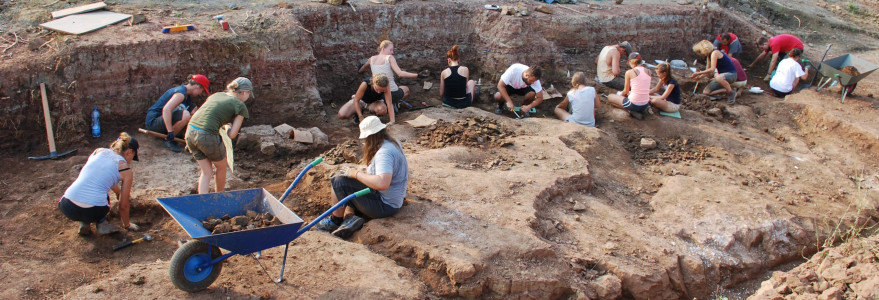A team of scientists, including researchers from the UW’s Faculty of Biology, has made a discovery of bones belonging to extinct animal species from about 240 million years ago. The specimens were found in the area of the Upper Silesian village of Miedary.
Before the appearance of dinosaurs, the studied areas included a bay of tropical sea, at the bottom of which bones of at least twenty-four species of fish, amphibians and reptiles were preserved. Researchers from the UW’s Faculty of Biology – Dr Łukasz Czepinski, Dr Mateusz Talanda and Wojciech Pawlak – in cooperation with researchers from the Institute of Paleobiology of the Polish Academy of Sciences, discovered more than 1,000 bones of extinct animals.
“Some of them were previously unknown in Poland, and some have not been found anywhere in the world before. We have discovered, among others, the remains of the crocodile-like Mastodonsaurus, the fish-eating yet unnamed armoured reptile and the aquatic predator Jaxtasuchus,” Dr Mateusz Tałanda says.
Among the most interesting specimens are numerous bones of Tanystropheus, a reptile that reached six metres in length. Due to the recent discoveries, Miedary has become the world’s richest source of remains of this species. What is also surprising is the composition of the discovered fossil assemblage, in which animals considered typically marine and freshwater coexist. According to the researchers’ interpretation, the finds provide insight into the ancient ecosystem of a low-salinity sea, similar to today’s Baltic Sea.
An article on the biologists’ findings was published in the Journal of Vertebrate Paleontology. The scientists plan to continue field work and research on the individual species found in Miedary.
Publication details
Czepiński Ł., Pawlak W., Rytel A., et al, 2022. A new vertebrate assemblage from the Middle Triassic from Miedar (southern Poland). “Journal of Vertebrate Paleontology” 42(6), doi.org/10.1080/02724634.2023.2265445.



